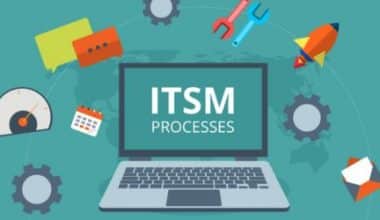Many people have wondered how the leave of absence policy works. You’re at the right place if you’re among this set of people.
In this article, we will explain what a leave of absence policy is and how it works
What Is Leave Of Absence?
A leave of absence policy is time off from work for a stated cause and a predetermined period, usually at an employee’s request. An employee who cares for family members can use a leave of absence to attend to specified obligations or deal with an emergency at home.
Additionally, it gives time off to workers who have major medical issues. People occasionally combine it with leave for family, illness, or grief. To extend time off for extenuating circumstances if an employee needs longer, businesses should have a formalized protocol.
It’s crucial to strike a balance between an employee’s needs and any potential effects taking time off might have on the business.
Types of Leave of Absence
For a variety of reasons, employers may grant a leave of absence. Law mandate or regulate some of such explanations. Compassion or fostering a positive workplace culture may also be motives.
You are required by law to uphold any agreement you have reached with a union or an employee. You might have to pay a fee and restitution if you break the law. A judgment could be obtained against you if you break a contract. These possibilities will be lessened, and your likelihood of being found in error will decrease with properly established policies.
Making the best choices for your business and employees can limit potential liability and foster a healthy work environment. These are some examples of leaves of absence:
- Maternity leave (maternity or paternity leave)
- Voluntary absence
- Voluntarily taking time off (other than for pregnancy or paternity)
- Mandatory time off
- Parental leave
#1. Parental Leave
Upon the birth of a new child, a mother or father may need to take parental leave. A worker may need to take a significant amount of time off work to prepare for the new family member because newborns need continual attention.
#2. Involuntary Leave
Involuntary leave may be required if an employee is implicated in a crime and an investigation is required. For a thorough, appropriate inquiry to occur, an employee suspected of acting improperly may need to be away.
#3. Maternity Leave
We may regard maternity or paternity leave as a type of voluntary leave. Still, there are many other situations where an employee could need to take an extended vacation. Given that no laws generally govern this, company policy will usually dictate the alternatives for voluntary leave.
#4. Mandatory Leave
Usually, both state and federal regulations regulate mandatory leave. Usually, medical needs necessitate a required leave of absence. The American Disabilities Act (ADA) and the Family and Medical Leave Act, which comprise most of its legislation, control (FMLA).
Leave Of Absence Policy
We know an established set of rules and principles for handling these employee absences as a leave of absence policy. It includes information on the forms of leave to which employees are entitled, whether time off is accrued or assigned, and any restrictions and prerequisites.
It also describes how to request leave, when to pay workers for missed work, and how to track and monitor vacation time.
Personal Leave Of Absence
Any time away from the office for personal reasons not otherwise covered by the FMLA or other protected leave rules is considered a personal leave of absence. Unpaid and job-unprotected personal leaves of absence are available.
Once they have worked for the company for a full year straight, regular full-time employees of the company may be qualified to take a personal leave of absence. There can be a maximum of eight weeks of unprotected personal leave in any given calendar year, and I must take it in one block of time.
Any request for a personal leave of absence will be approved or denied at the Company’s sole discretion following consideration of several factors, including the reason(s) for the leave, the effect the leave will have on the Company, the accessibility of alternative personnel resources and the performance of the employees. Any requests for personal leave are at the Company’s discretion.
Unpaid Leave Of Absence
Regular full-time and part-time workers may request an unpaid personal leave of absence, which the department manager may approve if they have significant personal demands.
Although unpaid leave does not pay the employee’s earnings while they are gone, it does guarantee their employment, which might be crucial in the case of some benefits paid for by the employer, such as earned vacation time or health insurance.
Once an employee has exhausted all paid leave options, including accrued vacation days, sick days, and PTO, an unpaid leave of absence usually follows (paid time off).
Depending on the employer’s unpaid leave policy, they may guarantee the employee a job during their absence. This may enable the worker to keep their health insurance during their absence.
- If an employee’s existing leave balance has been used up and they require time off due to unanticipated circumstances, they may be able to take unpaid leave.
- If no consent is obtained for unpaid leave, the employee’s absence will be regarded as a leave from the workplace.
- If you miss class without permission, discipline will be applied.
- They will not pay employees who take unpaid leave for those days.
- An employee may request up to three months of unpaid absence.
- An employee can request pay loss via the HRMS tool, with the head of the department and immediate reporting manager approving it.
- Employees may request leave when it has been approved by their immediate reporting manager and department head.
- On the HRMS tool, they will report leaving as a pay loss.
Procedure for Requesting Unpaid Leave Of Absence
- An employee may request loss of pay by submitting an application through the HRMS tool and obtaining the head of department’s and immediate reporting manager’s permission.
- The employee may take leave after getting approval from the department head and immediate reporting manager.
- On the HRMS tool, they will report leaving as a pay loss.
Medical Leave Of Absence Policy
Employees who cannot work owing to a significant health condition may take a medical leave. These could include ailments of the body or mind or the requirement to care for a relative. Typically, these leaves are unpaid. The employee’s employment is federally protected throughout this time.
In general, employees can use their remaining paid leave first, along with taking medical leave or both. The employer cannot object to an employee’s request for leave when the employee has given notice of their intention to do so for a legitimate reason.
Taking a medical leave of absence in one continuous, 12-week period is unnecessary. Employees can handle reoccurring issues or setbacks by being adaptable, which will keep them from worrying about their careers.
How Long Must a Medical Leave of Absence Last and How Much Pay Must Be Paid?
According to the FMLA, businesses must grant employees up to 12 weeks of unpaid medical leave. They do not compel the employer to offer paid leave in this FMLA leaves category as in other leave categories. Additionally, companies that offer paid leave options (such as paid sick time and paid vacation time) may mandate that their staff members take any accrued leave during the 12-week term.
What Is a Good Reason For Leave Of Absence?
A leave of absence is a mechanism for workers to take time off from work while dealing with extraordinary circumstances, as opposed to paid time off (PTO) and vacation time.
The following are typical justifications: childbirth, adoption, taking care of sick family members, major health issues, or military leave.
What Is an Official Leave Of Absence?
Any leave of absence provided by an organization following the Regulation’s provisions is called an “official leave of absence.”
Is a Leave Of Absence the Same as FMLA?
Usually, an employee is exempted from work obligations for a specified time with the employer’s approval during a leave of absence.
There are usually specific policies in place at each organization to address this, including two weeks of unpaid time off. If both employees and employers meet certain criteria, the FMLA mandates businesses to offer unpaid time off to their staff.
How Can I Take a Leave Of Absence From Work Due To Stress?
Inform the human resources department of your employer that you would like to take a stress leave granted under the FMLA. You will receive the essential documents to bring to your doctor from them. Your doctor must advise you to take a stress leave; simply stating that you are too stressed to work is insufficient.
It’s crucial to be honest, and not minimize your symptoms while speaking with your doctor. If you keep saying, “It’s fine,” they won’t be able to give it a fair review. Nothing is wrong. Just a little bit stressed. Keep in mind that stress can have an impact on both your physical and emotional health.
How Long Can an Employee Be Absent From Work?
An employee can be absent from work for a maximum of one or two days per month. Any condition other than this can cause that person in jeopardy.
According to vocational specialists, a worker cannot be absent for more than one or two days every month and still maintain her employment. Employers are least tolerant of missed days for those performing unskilled jobs.
Can You Ask For a Leave Of Absence From Work?
When an employee is granted a leave of absence by their company, they can take a long period off from work. If you know you won’t be able to work for more than a few weeks but still want to return to your job; you should ask your employer for a leave of absence.
During my leave of absence, will they will still pay me?
Aside from long-term disability, maternity (childbirth), and parental leaves, all other leaves of absence are unpaid.
Can I take a leave of absence if I have to care for a member of my family who is very ill?
A very unwell family member can require a worker to take a family care leave.
Conclusion
A leave of absence policy that follows the law and fosters compassion demonstrates to employees that the company is concerned about their well-being. A positive employee-employer relationship lays the groundwork for a committed, productive, and happy workforce.
- BEST EMPLOYEE LEAVE MANAGEMENT SYSTEM: Top Picks In 2023
- PAID TIME OFF POLICY: Best Practices and Examples
- PTO POLICY: A Step-by-Step Guide for Creating a PTO
- EXCUSED ABSENCE: What Does It Mean To Be Absence From Work?
- HOW TO CALL OUT OF WORK: Requesting for Leave of Absence






